Higher Calling
An Emory student joins the first all-US military team to climb Mt. Everest

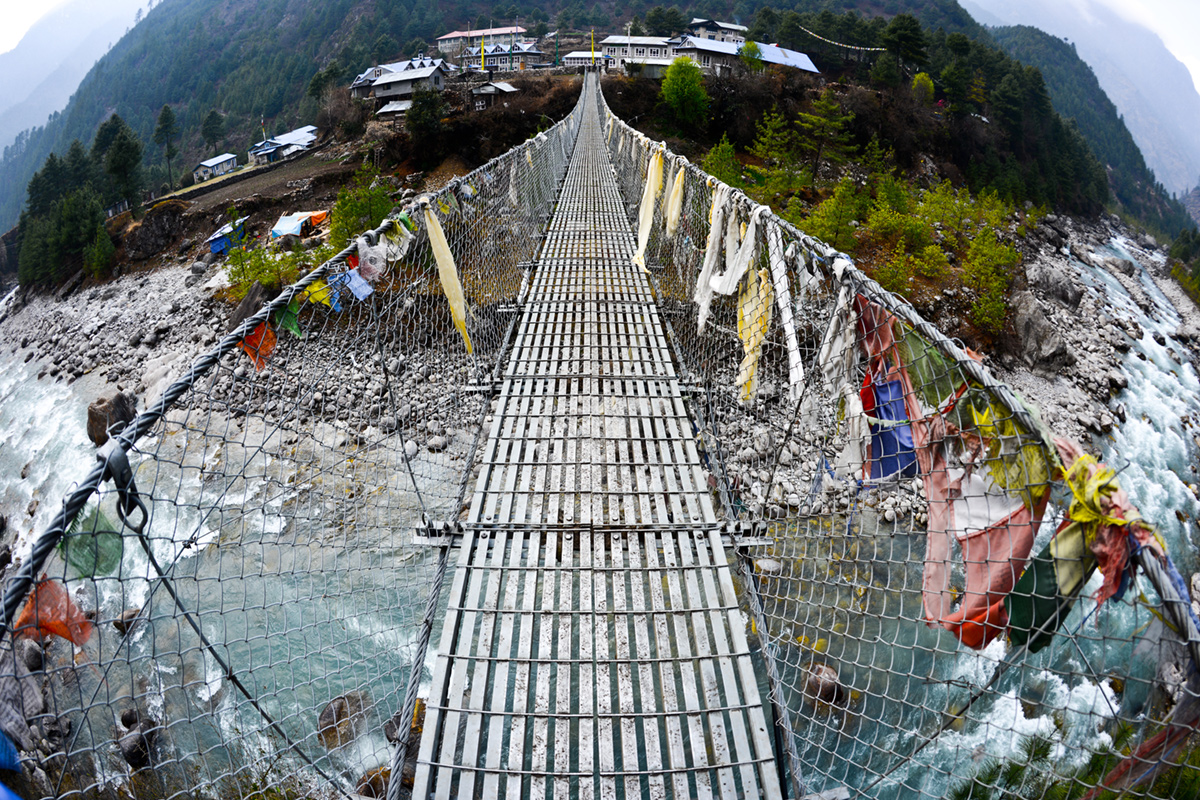
Walking On Air: Arriving by way of Hong Kong and then Kathmandu, the USAF Seven Summits Challenge team flew into Lukla, a town perched at an altitude of nearly ten thousand feet in the Himalayas, northeastern Nepal. With its extremely short and steep airstrip, Lukla's tiny airport has been called the most dangerous in the world—making this suspension bridge look like a walk in the park. From there the team would hike up to the Namche Bazaar village, a popular destination for adventurous travelers and their last taste of civilization for a while.
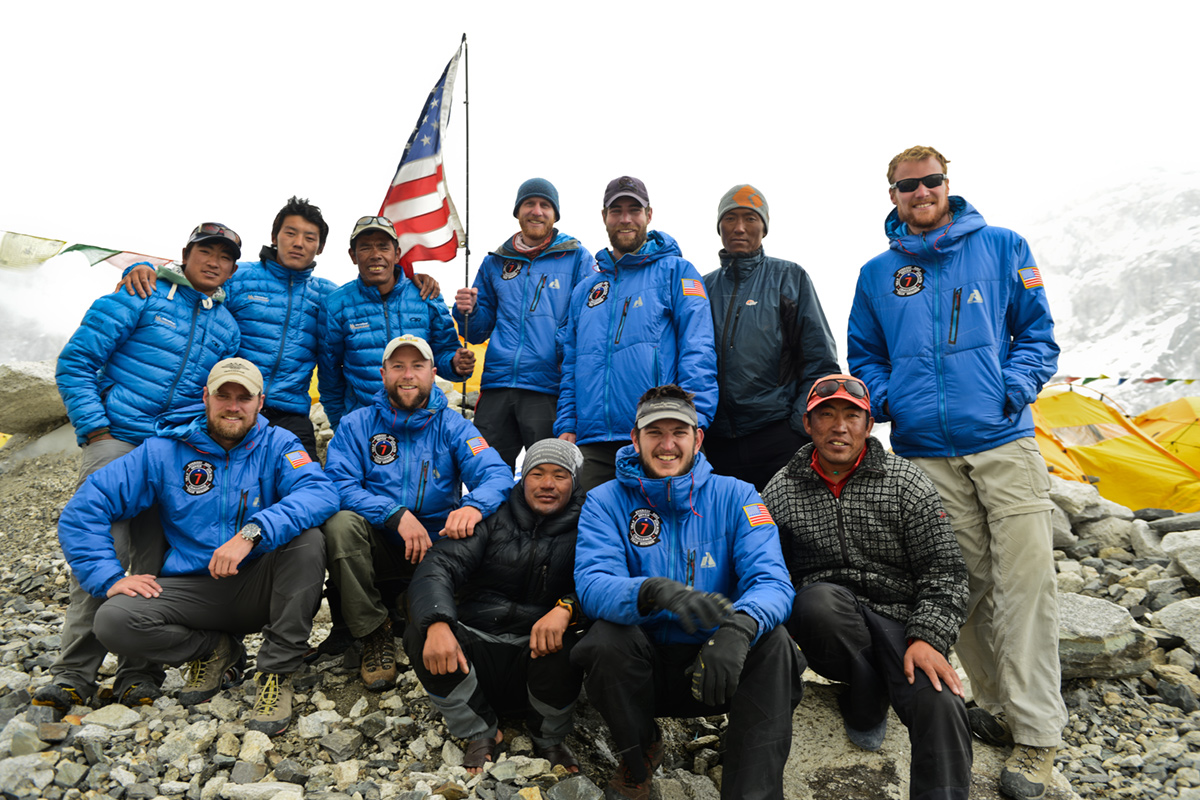
Say 'Freeze': The USAF team, shown here with their Sherpas, included cofounder Rob Marshall, Colin Merrin, Marshall Klitzke, Kyle Martin, Drew Ackles, and Gibson. The son of two retired air force veterans (his dad is Gordon Gibson 65M), Gibson has been in the military for nearly a decade and was stationed in Alaska for three years as a pararescueman with the Air National Guard, where he honed his climbing skills. Gibson learned about the Seven Summits Challenge more than five years ago while deployed in Iraq and had hoped to join a climb ever since; he was helped by sponsorship from Data.com, a Sales Force company. As a student in Emory's Physician Assistant Program, Gibson was elected to serve as the student representative to the Veterans Caucus of the American Academy of Physician Assistants (AAPA). He plans to be an advocate for veterans' needs in the civilian health care system.
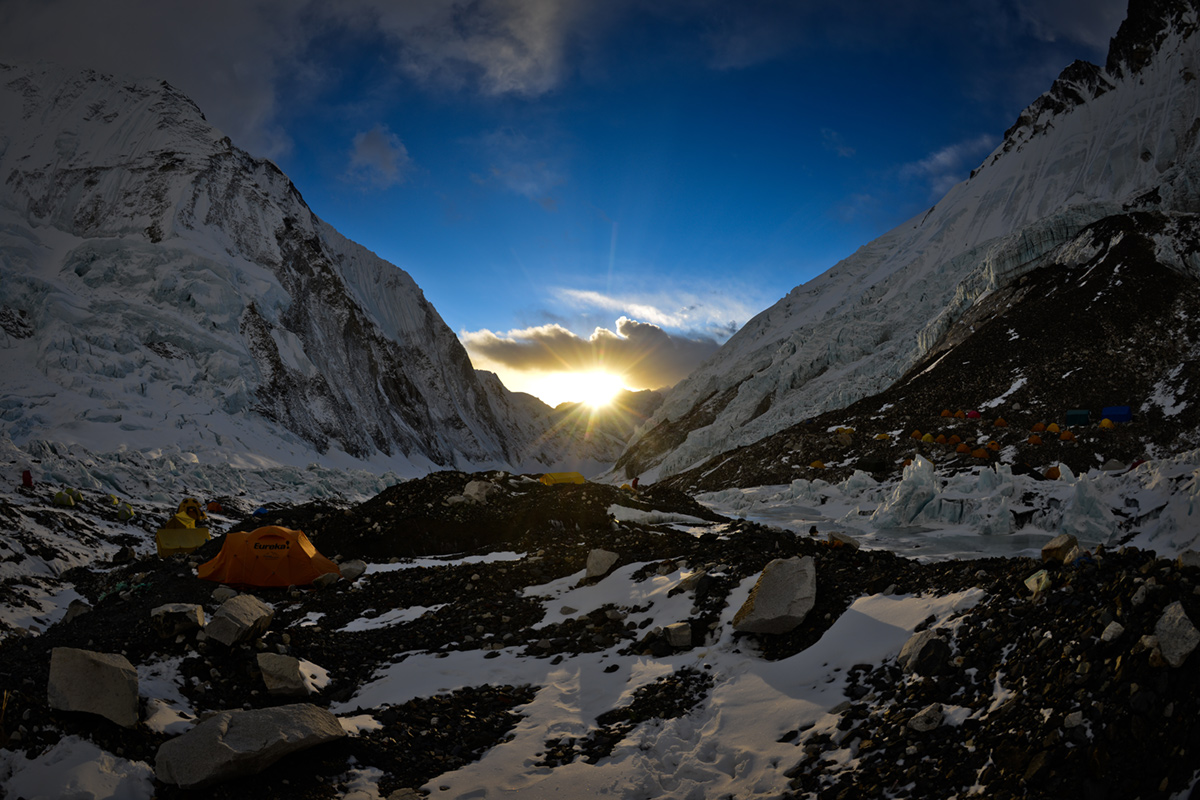
Star Struck: This spring marked the sixtieth anniversary of the first successful Everest ascent by a Nepalese-Indian mountaineer and a New Zealand explorer. Now hundreds of climbers strive for the summit every year, with as many as two hundred on the mountain at once. Gibson, an avid photographer, captured thousands of extraordinary images during the USAF Seven Summits Challenge expedition—such as this sunrise over Everest Base Camp.
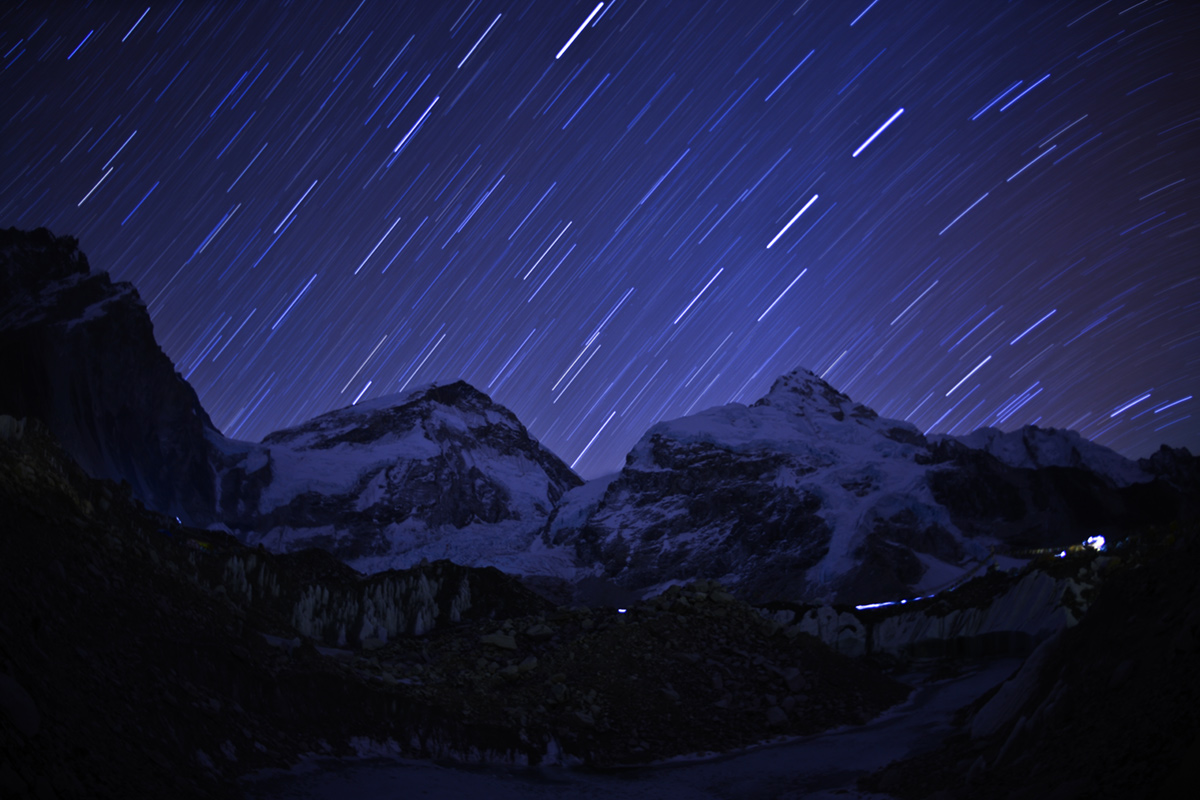
Star Struck: This spring marked the sixtieth anniversary of the first successful Everest ascent by a Nepalese-Indian mountaineer and a New Zealand explorer. Now hundreds of climbers strive for the summit every year, with as many as two hundred on the mountain at once. Gibson, an avid photographer, captured thousands of extraordinary images during the USAF Seven Summits Challenge expedition—such as this thirty-minute-long-exposure shot of the starry night sky.
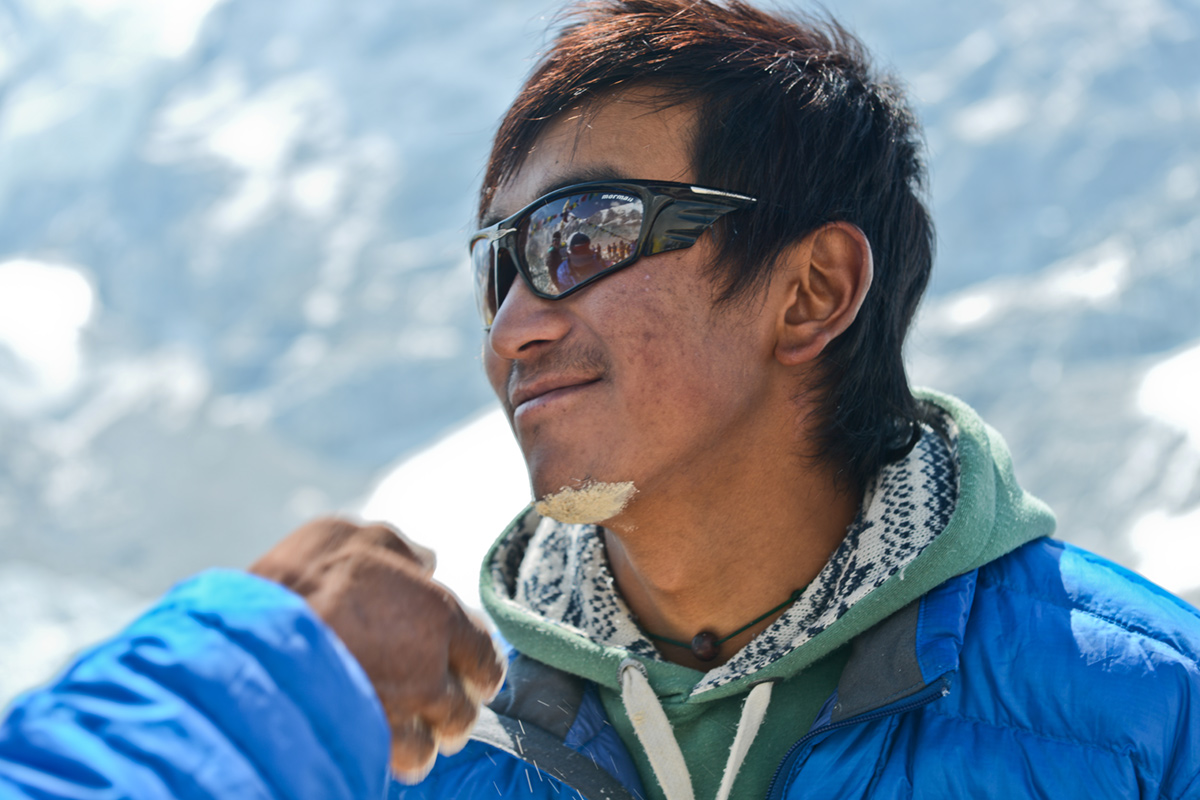
Fast Friends: Although Sherpas are an ethnic group from the Himalayan region, the term has become synonymous with the expert local guides who now accompany thousands of climbers attempting to summit Mt. Everest each year—a deeply respected cultural practice that has attracted controversy as extreme mountaineering becomes much more commercial, but no less dangerous. Gibson says his Sherpa, Mingma Tenzing II, became "like a brother" to him during the weeks they spent together on the mountain. After their final descent, Mingma learned that his sister had unexpectedly lost her five-month-old baby, and Gibson visited the family to express his personal sympathy. "It really put not reaching the summit into perspective," he says.
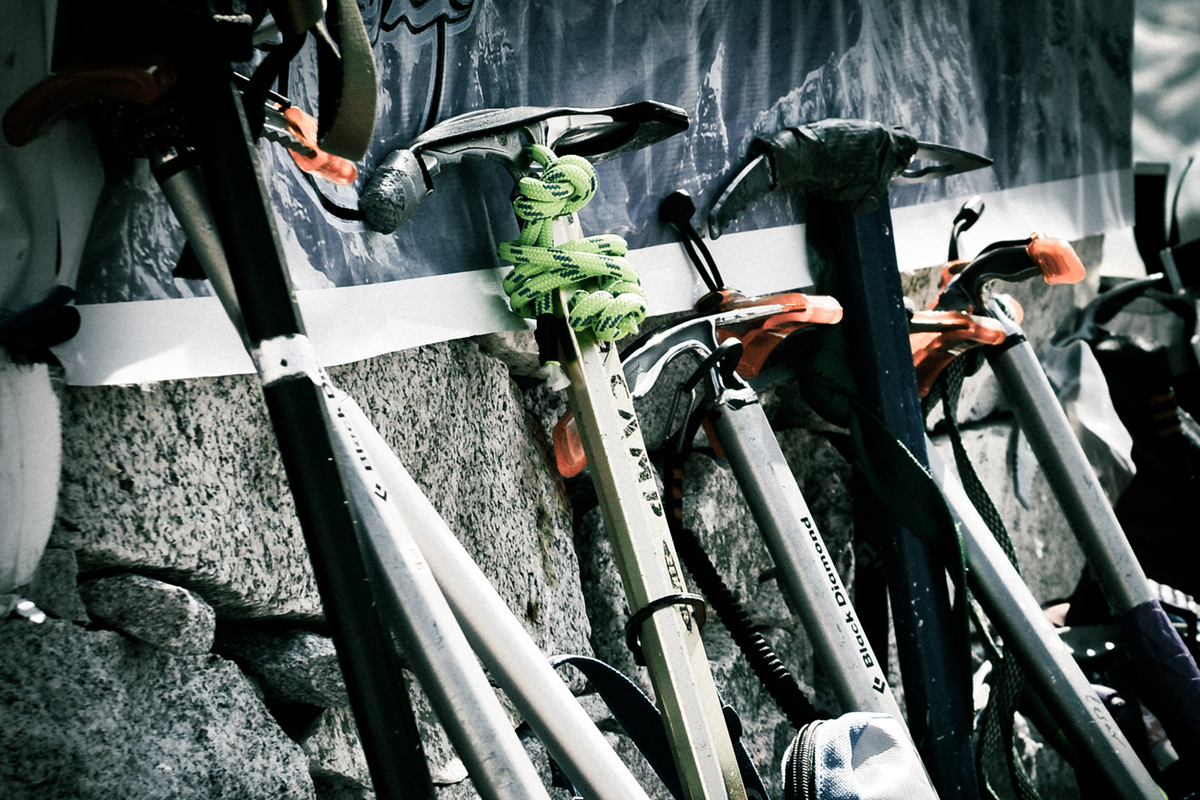
Good Luck Charms: Before each Everest expedition, Sherpas perform a ceremony called puja to bless the extensive collection of necessary equipment, such as these ice axes, and ask the gods for good fortune on the climb. The ritual includes chanting, prayers, offerings of food, and the burning of juniper, culminating with the Sherpas and climbers rubbing starchy flour onto each other's faces—their gray beards a symbol of their hope that they will all grow old and have many children.
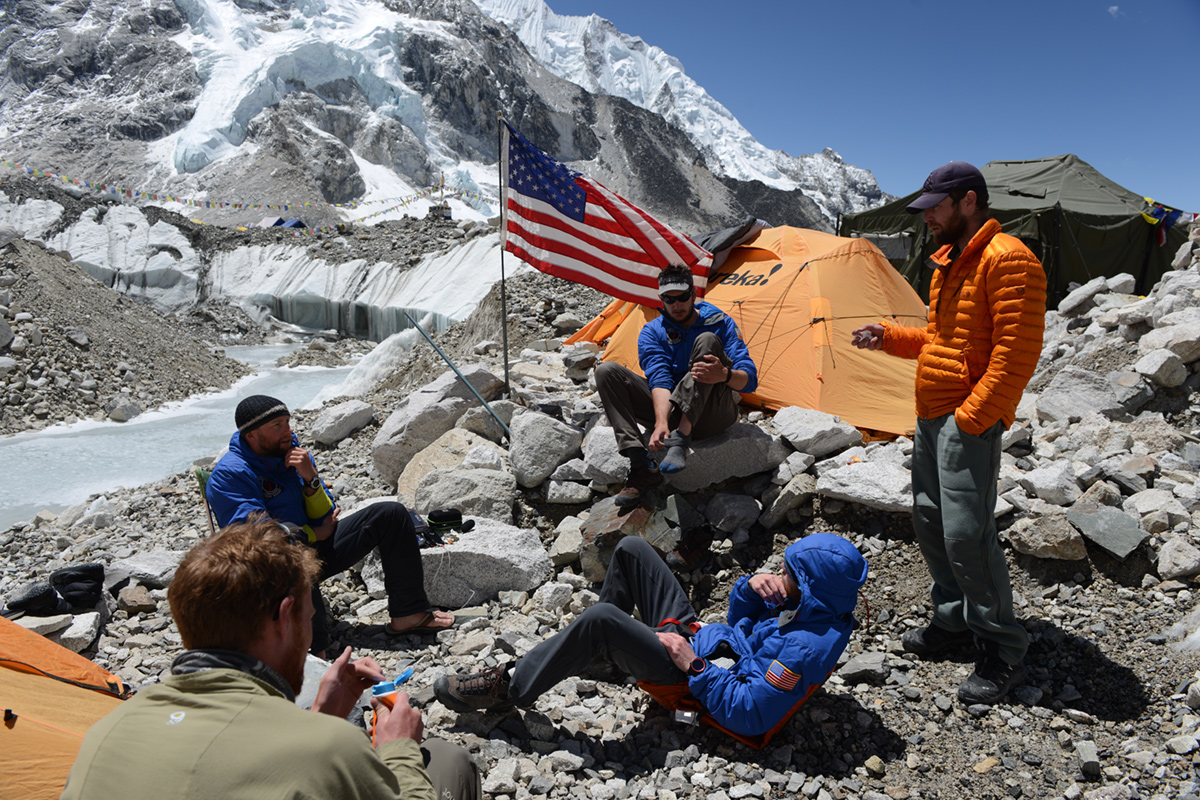
High Hopes: To prepare for "summit day," the team—like most Everest climbers—undertook a series of up-and-down climbs, totaling four rotations of about four to six days each. This switchback process among the mountain's four temporary camps is critical in order to acclimate to the altitude and ready bodies and minds to exist briefly in the atmosphere where jumbo jets fly. Following their four preparatory climbs, the USAF team cooled their heels at Everest Base Camp with about a thousand other hopeful climbers, awaiting word of their summit date. Here they discuss their plans for the final climb, about a five-day total trek—first to Camp Two, then up the icy Lhotse Face for a night at Camp Three, where they will start to need supplemental oxygen. The next stop is the South Col at twenty-six thousand feet before the last, eight-hour push to the peak.
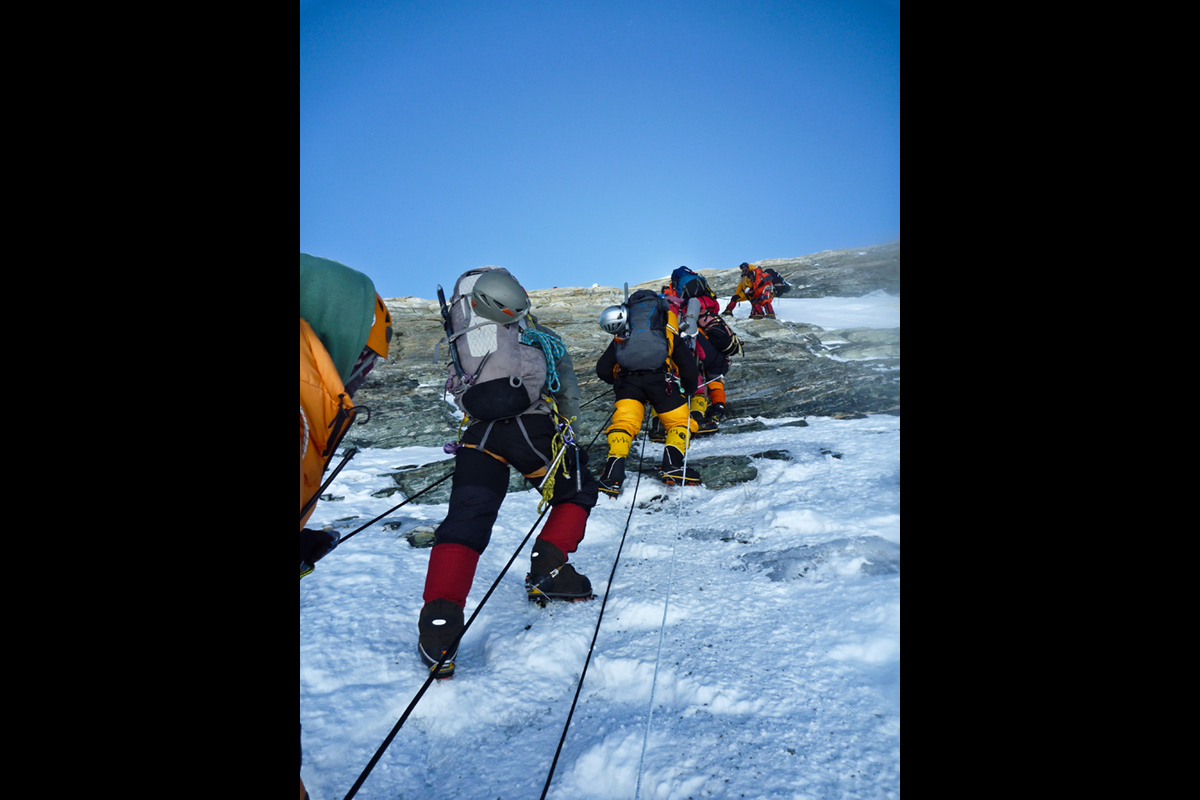
Hang On: Less than a thousand feet from the Everest summit, Gibson found himself caught behind a large group of climbers. He used one of the multiple lines such as these, as well as free climbing, to push past them. But the effort cost him considerable strength and, along with the very real fear of frostbite in his fingers and toes, eventually contributed to his decision to turn back. "My medical career is way too valuable to risk for the summit," he says. "I knew I had the ability and the strength to reach it, but I also knew it was not worth what I would risk."
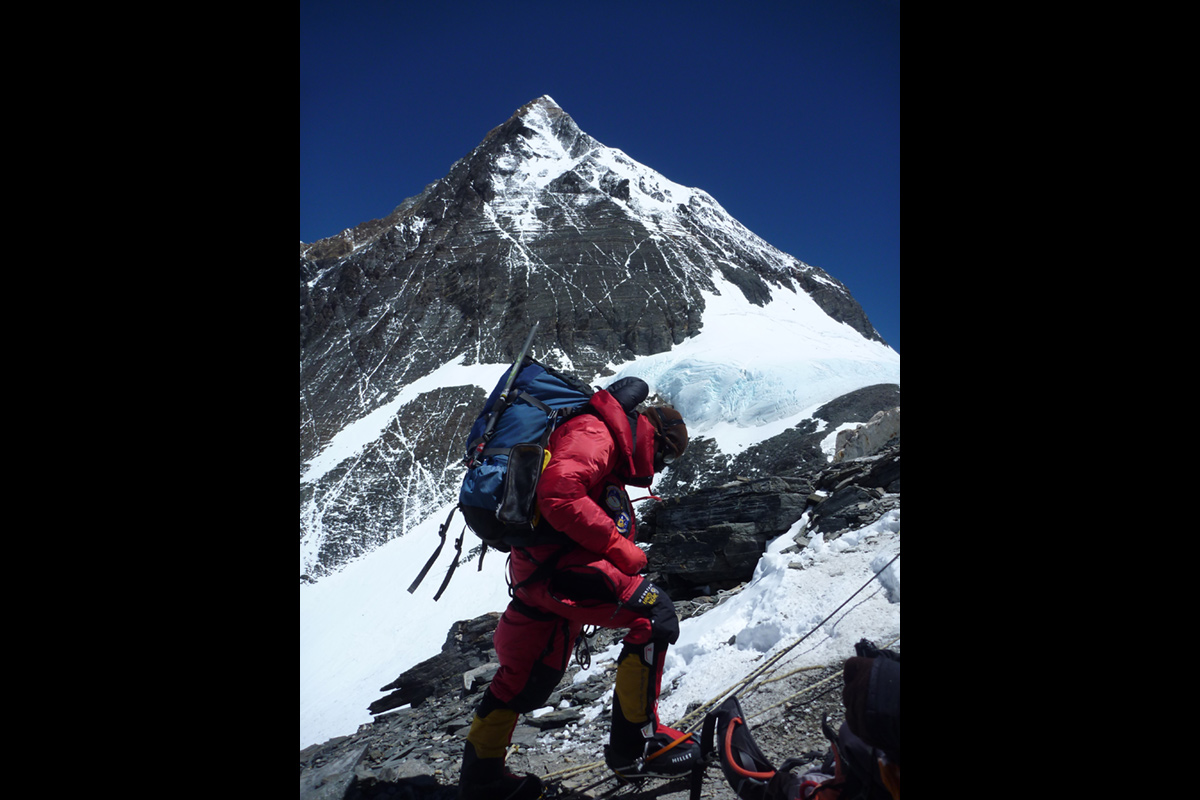
into thin air Like Gibson, Colin Merrin, shown here with the mountain's South Summit and the "Balcony" in the background, ultimately decided to turn around before reaching the top due to a respiratory infection. Gibson did reach the Balcony, a small platform where climbers can stop and admire the view at 27,600 feet, and climbed another three hours before turning back. He says the USAF team approached the climb as a field exercise in risk analysis and management, viewing themselves as assets to be protected. "It would have been different if I was on a pararescue mission and someone else's life was in danger," he says. "It was an emotional decision, but it was the right one." Gibson remains a member of the Air Force Reserve 920th Rescue Wing, 308th Rescue Squadron.
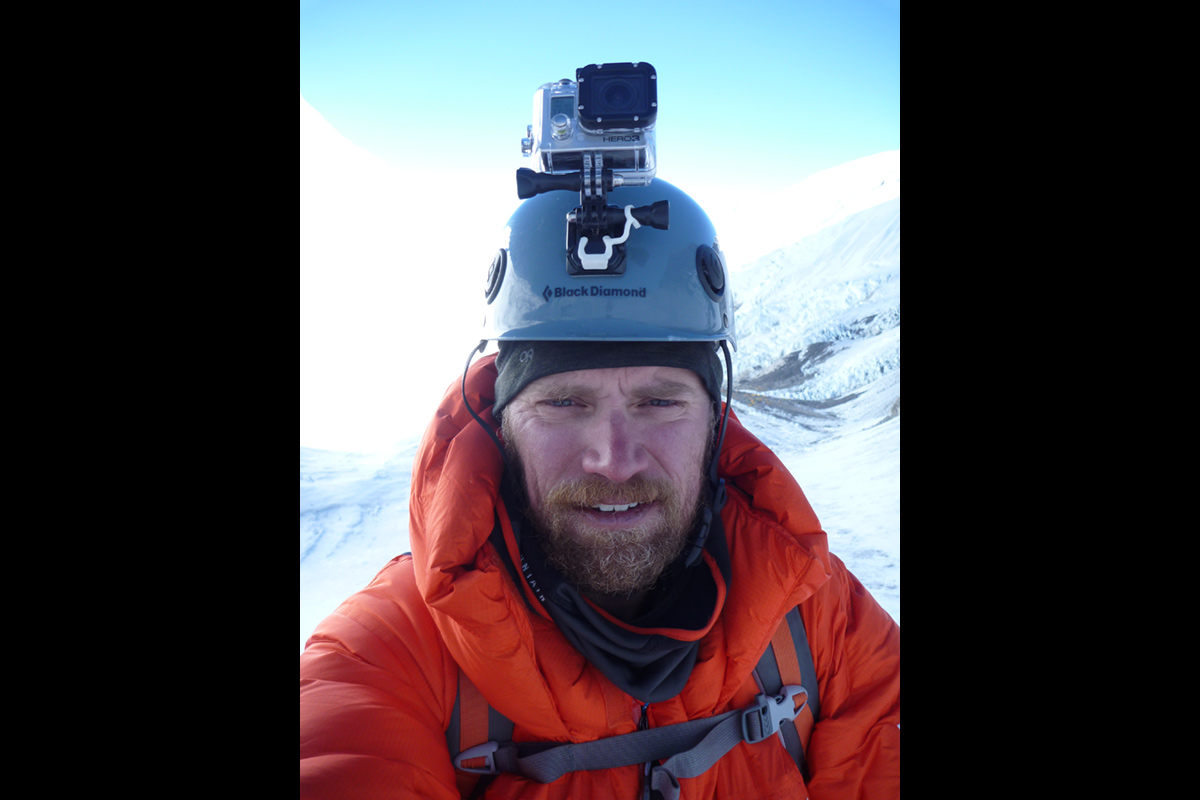
Mountain Man: Gibson says he trained for about a year for the Everest climb, doing grueling CrossFit workouts in addition to his pararescue regimen. But it's tough to truly prepare for the thin air, the physical terrain, and the sheer vertical force of the mountain. "It's a constant battle with your body," Gibson says. "Now I know how mine works at 28,000 feet." In addition to serving as the primary photographer for the USAF Seven Summits Challenge team's Everest adventure (this self-portrait shows the mounted camera he wore for much of the time), Gibson had plenty of chances to practice his medical skills. As a physician assistant student and trained air force pararescueman, he quickly became known on the mountain as the guy who could treat minor injuries as well as more serious conditions. He drained a climber's toenail of underlying fluid, examined another for potential frostbite, and kept watch for the most common afflictions of mountaineers: upper respiratory and GI problems, dehydration, and the more dreaded "HAPE" and "HACE"—high-altitude pulmonary and cerebral edema.
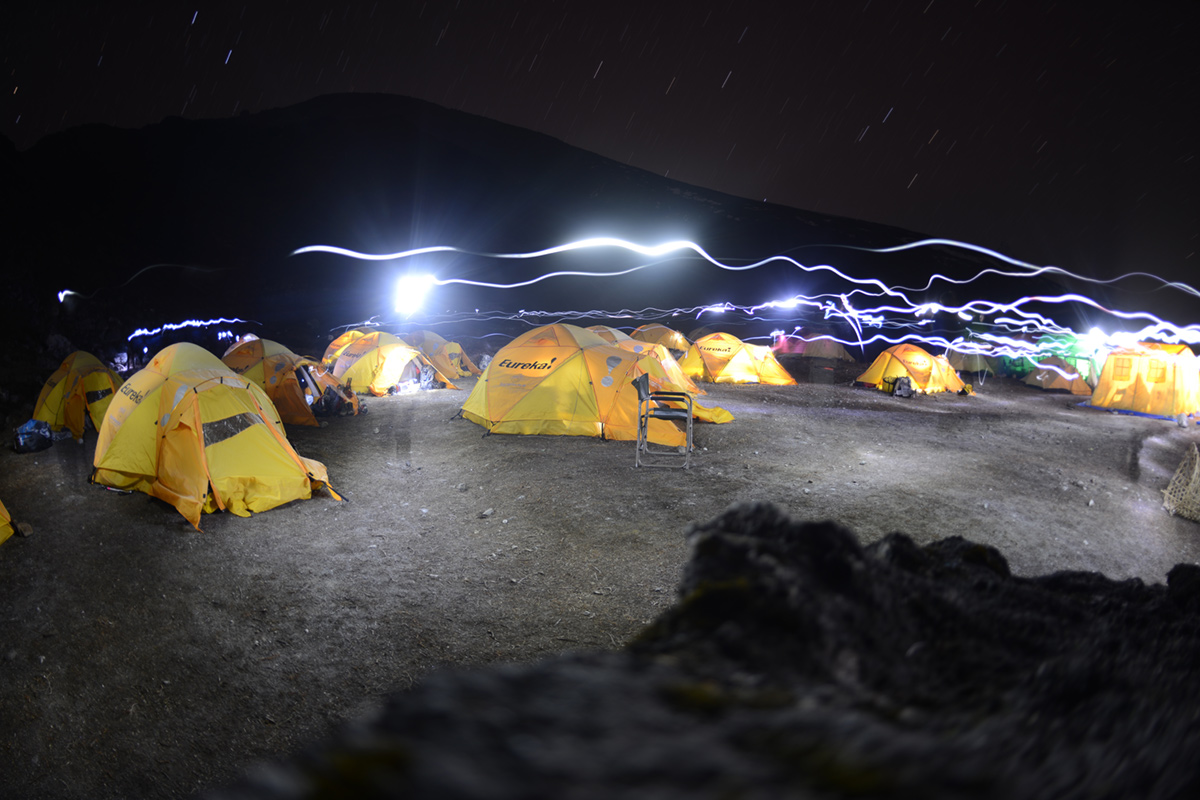
Night Life: This long-exposure photograph illuminates the paths of climbers' headlamps as they move about Everest Base Camp in the dark. There's plenty of down time during an Everest attempt; to while away the hours, Gibson says, they played cards, read (he brought a Bible and an iPad loaded with medical books), and occasionally used precious battery power to watch movies on mobile devices in one another's tents.

Home Base: Since his return from the Everest climb—twenty-five pounds lighter than when he left—Gibson has taken advantage of the publicity to raise awareness for veterans' health issues. In addition to his role with the AAPA, he is active with the Emory Veterans Association, and any profits earned from his stunning photographs will benefit the That Others May Live Foundation, a nonprofit serving the families of USAF members who have been killed or severely wounded. "When I started PA school, I began to realize that veterans' health care was not adequately addressed in PA programs," he says. "The Everest climb seemed like a great platform to speak up for veterans unable or too uncomfortable to speak for themselves."
If Nick Gibson 13PA was a latecomer to the United States Air Force (USAF) Seven Summits Challenge, he made up for it with a dramatic entrance. This spring, Gibson joined the first all-US military team to climb the highest mountain in the world, Mt. Everest—the last of seven heroic vertical treks undertaken to raise awareness and funds for organizations that help the families of veterans and fallen airmen. At 29,035 feet, Everest was the tallest of the lot by about twenty percent, and Gibson came within eight hundred feet of the summit before turning back due to the risk of frostbite—returning home to Emory with his toes, and his pride, fully intact.



